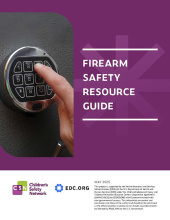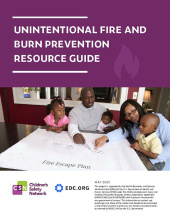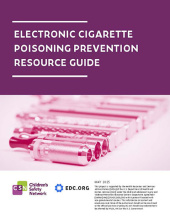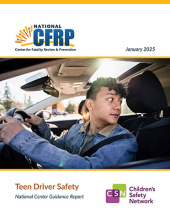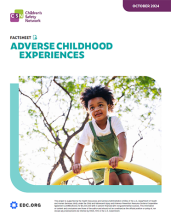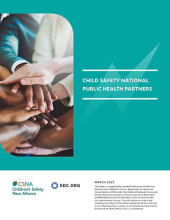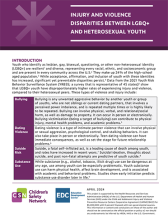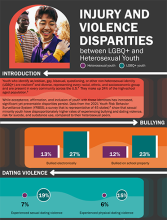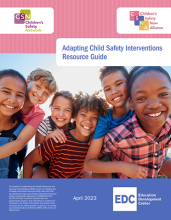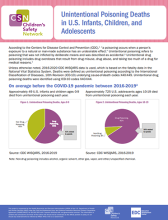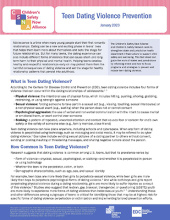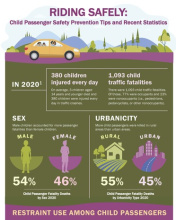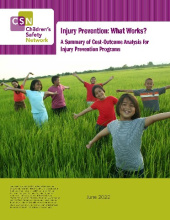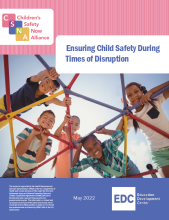CSN Publications
![]() This page displays all Children’s Safety Network (CSN) publications sorted by date released. Please feel free to download and share through Facebook, X, Pinterest, or email.
This page displays all Children’s Safety Network (CSN) publications sorted by date released. Please feel free to download and share through Facebook, X, Pinterest, or email.
Released Date:
Burn injuries cause physical bodily damage, in addition to immediate and long-lasting psychological harm and quality of life losses to children, adolescents, and their families.1-3 According to the 2020-2023 National Electronic Injury Surveillance System (NEISS)4 data operated by the Consumer…
Read MoreReleased Date:
A firearm injury is a gunshot wound or penetrating injury from a weapon that uses a powder charge to fire a projectile, such as a handgun, rifle, or shotgun. Injuries from air- and gas-powered guns, BB guns, and pellet guns are not considered firearm injuries as these weapons do not use a powder…
Read MoreReleased Date:
Fires and burns are the fifth leading cause of unintentional injury-related deaths to infants, children, and adolescents ages <1-19 in the U.S.1 Nearly 300 U.S. infants, children, and adolescents die2 and about 80,000 are treated and released from emergency departments (ED) per year for nonfatal…
Read MoreReleased Date:
Electronic cigarettes — also known as “e-cigarettes,” “e-cigs,” “vapes,” “e-hookahs,” “vape pens,” and “electronic nicotine delivery systems”— include a wide range of battery-powered devices used to inhale nicotine and other chemicals. Although using e-cigarettes is generally thought to be less…
Read MoreReleased Date:
Childhood lays the foundation for future success, with safe and supportive environments promoting healthier adult outcomes. Adverse Childhood Experiences (ACEs) can lead to long-term social, behavioral, and health challenges. Preventing and addressing ACEs is vital, and requires family, community,…
Read MoreReleased Date:
Title V agencies working in injury and violence prevention and child safety address a broad range of injury topics across many populations. Partnering with national level public health agencies, organizations, and networks can play an important role in increasing the reach and impact of child…
Read MoreReleased Date:
This page features a series of podcast interviews CSN has conducted across the numerous child safety topics we address. Interviewees include active members of the Children's Safety Now Alliance.For more information about each podcast episode and to listen…
Read MoreReleased Date:
Youth who identify as lesbian, gay, bisexual, questioning, or other non-heterosexual identity (LGBQ+) are resilient1 and diverse, representing every racial, ethnic, and socioeconomic group and are present in every community across the U.S.2 They make up 24% of the high-school aged population.3…
Read MoreReleased Date:
Youth who identify as lesbian, gay, bisexual, questioning, or other non-heterosexual identity (LGBQ+) are resilient1 and diverse, representing every racial, ethnic, and socioeconomic group and are present in every community across the U.S.2 They make up 24% of the high-school aged population.3…
Read MoreReleased Date:
Youth who identify as lesbian, gay, bisexual, questioning, or other non-heterosexual identity (LGBQ+) are resilient1 and diverse, representing every racial, ethnic, and socioeconomic group and are present in every community across the U.S.2 They make up 24% of the high-school aged population.3…
Read MoreReleased Date:
Delivering interventions that have been shown to be effective in improving desired outcomes—also referred to as evidence-based practices (EBPs)—is critical to achieving improvements in child safety. Ideally, the interventions selected are ones that best fit local needs and circumstances. But even…
Read MoreReleased Date:
In 2020, unintentional poisoning was the second leading cause of unintentional injury deaths for children and adolescents ages 1-19. Drug poisoning was related to 73% of the unintentional poisoning deaths in children ages 0-9, and 96% of the unintentional poisoning deaths in adolescents ages 10-19…
Read MoreReleased Date:
A traumatic brain injury (TBI) can be mild, moderate or severe. It is defined as a disruption in the normal functioning of the brain due to a bump, blow, or jolt to the head or a penetrating head injury.1 It is a major cause of morbidity and mortality in the U.S. that can have life-long financial,…
Read MoreReleased Date:
Adolescence is a time when many young people start their first romantic relationships. Dating can be a new and exciting phase in teens’ lives that helps them learn more about themselves and sets the stage for future relationships. But for many teens, the dating experience can also include different…
Read MoreReleased Date:
Among children and adolescents ages 0 – 19 years, most pedestrian deaths occur among males, in non-metro areas, at non-intersection locations and at night.1,2 American Indian/Alaska Native and Black children ages 0 – 19 years are at higher risk for pedestrian death and injury than other racial…
Read MoreReleased Date:
Injuries and violence are among the most serious social, economic, medical, and public health issues. Injuries and violence are a leading killer among all ages, and the number one killer among kids, teens, and adults ages 1-44.1 Injuries and violence affect all of us including the families left…
Read MoreReleased Date:
When a disaster, disease outbreak, or other crisis occurs, overwhelming a community’s capacity to respond, child safety efforts often need to adapt in order to be sustained. These disruptions can increase the risk for child injury and illness, while also creating serious challenges for…
Read MoreReleased Date:
All Children are Pedestrians! Prevention Tips and Recent Statistics Approximately 600 children and adolescents die from pedestrian injuries each year. More than 3 in 4 pedestrian injuries in children and adolescents are related to motor vehicle traffic. Age Compared to children ages 5-9 or 10-14…
Read More
